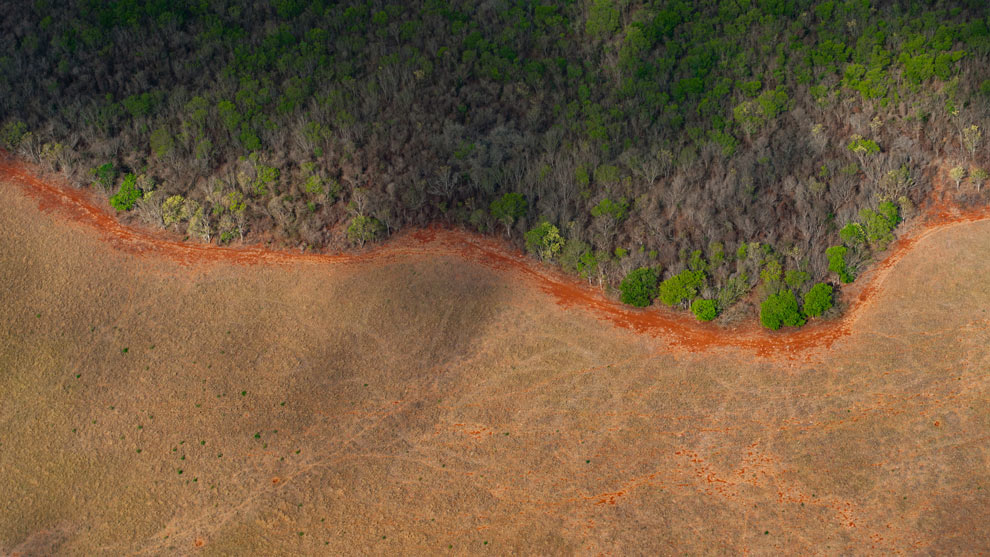Human activity, and especially the change in land use, is the main threat to natural ecosystems, including forests, says the director of the Institute for Research in Ecosystems and Sustainability (IIES), Diego Pérez Salicrup.
In our country, between 2001 and 2018, an average of 212,070 hectares of forest were lost per year: 94 percent were converted into spaces for agricultural uses, followed by conversion to agriculture, according to the National Forestry Commission.
The most critical areas of deforestation are located mainly in the Yucatan peninsula -Campeche, Quintana Roo and Yucatan-, as well as in the states of Chiapas, Michoacán and Jalisco, adds the agency.
“When we change the use of land covered by natural vegetation to another for human use, there is damage to the natural cover”, adds the specialist in Ecology and Management of Forest Resources.
On the occasion of the International Day of Forests –which was celebrated on March 21–, he highlights that for the good of humanity, forests and other ecosystems must be conserved, as they are sources of resources and places for the existence of the rest of the species. whose presence is essential for our own well-being.
“For example, the forests in the State of Mexico and Michoacán are spaces for aquifer recharge that supply the Cutzamala System, which supplies more than 10% of the water consumed in Mexico City, the most populous city in the country.”
Your relationship with health
This year, the motto of this event –established by the General Assembly of the United Nations (UN) in 2012– was “Forests and Health”.
Given this, the university student explains that, as cities and agricultural areas expand and the natural vegetation cover decreases, significant health problems can be generated.
“The species that live in forest ecosystems have less space, reduce their populations and can increase the diseases they suffer. Many are vertebrates, and the diseases that affect them can eventually mutate and become harmful to humans. homo sapiens or the species we use”, he explains.
For example, the avian flu that starts in some species can mutate, affecting wild birds and then domestic birds and other vertebrates, as is supposed to be happening with sea lions off the coast of Peru.
“We have to be aware that human activity, causing an irreversible loss of natural cover, sooner or later translates into an increase in the potential number of diseases that affect us as a species”, he stresses.
Sustainable agriculture and land use
The also member of the National System of Researchers indicates that another great challenge to maintain forests and other ecosystems is to promote sustainable agriculture, learning to produce while respecting the integrity of natural vegetation.
Today Michoacán’s coniferous and oak forests are under intense pressure to be replaced by avocado plantations, which began to expand in the year 2000.
The same is true in Jalisco’s arid zones, where the natural ecosystem of lowland jungle or seasonally dry forest has been replaced by blue agave plantations in order to satisfy the demand for tequila.
Globally, for example, the Amazon rainforests are brutally cleared. A few years ago it was to promote cattle; today, for the planting and use of a palm tree of African origin, used in the food, pharmaceutical and cosmetic industries.
The same happens in Argentina, Brazil, Paraguay, Bolivia, where there are large soy plantations that have a large market, mainly in China, and are a major driver of deforestation, he adds.
In this sense, Pérez Salicrup points out that it would be good, before purchasing certain products, to reflect on their origin and know the potential effect that their production has on forest ecosystems.
controlled fire
The expert adds that fires are a threat to forests, but one cannot forget that fire is part of ecosystem processes in various types of vegetation; Therefore, it is fundamental not to suppress or eliminate it, but to learn to manage it. “Coniferous forests, for example, generally require low-intensity but high-frequency burning (every five or 10 years), which favors regeneration.”
Problems arise “when we allow fuels to accumulate because we put out fires repeatedly, year after year, for decades – as happened in the United States –, we change the structure of the ecosystem, we increase the amount of light fuels and we can generate catastrophic firesthat completely remove the trees and can cause the site not to recover for decades because the adult trees that provide the seeds die”, he concludes.
